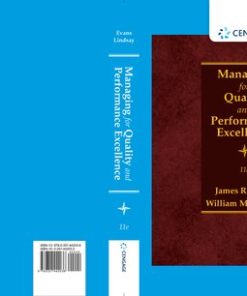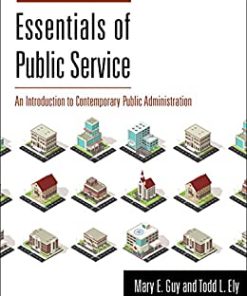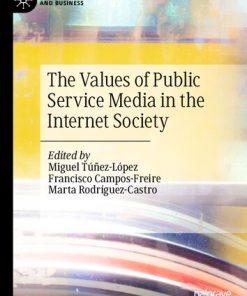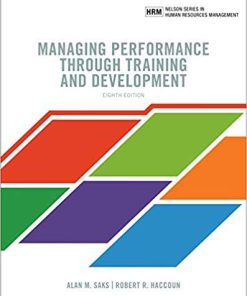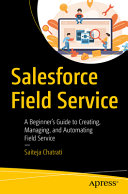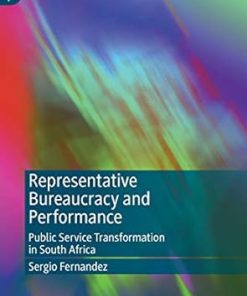(Ebook PDF) Managing for Public Service Performance: How People and Values Make a Difference 1st edition by Peter Leisink 0192645595 9780192645593 full chapters
$50.00 Original price was: $50.00.$25.00Current price is: $25.00.
Managing for Public Service Performance: How People and Values Make a Difference 1st edition by Peter Leisink – Ebook PDF Instant Download/DeliveryISBN: 0192645595, 9780192645593
Full dowload Managing for Public Service Performance: How People and Values Make a Difference 1st edition after payment.

Product details:
ISBN-10 : 0192645595
ISBN-13 : 9780192645593
Author: Peter Leisink
How can management make a meaningful contribution to the performance of public services? Around the world, public organizations face increasingly complex social issues related to globalization, migration, health crises, national security, and climate change. To meet these challenges, we need a better understanding of what managing for public service performance means, and what it requires from public managers and public servants. This book takes a multidisciplinary, critical, and context-sensitive approach to address such questions. Through a comparative review of public administration research, it examines a variety of management aspects such as leadership behavior, human resource management, performance, diversity, and change management. It also critically reflects on how the context of the public sector affects the management-performance relationship in democratic societies, as well as the influence of numerous stakeholders and their beliefs about the nature and purpose of public service. By clarifying conceptual issues and taking a theoretical and evidence-based approach to the relationships between management and performance, this book offers new directions for research and a framework to help improve public services in practice.
Managing for Public Service Performance: How People and Values Make a Difference 1st Table of contents:
1. Introduction: Managing for Public Service Performance: How People and Values Make a Difference
1.1 Introduction
1.2 Time and Place of Public Management and Performance: A Contextual Approach
1.3 Going Inside the Institutional Perspective: The Public Sector Context
1.4 Public Services: The Scope of This Volume
1.5 Literature Review: Defining Key Concepts
1.6 Our Approach
Part I. Key Concepts and The Public Sector Context
2. Stakeholders, Public Value(s), and Public Service Performance
2.1 Introduction
2.2 Key Concepts in Public Management Research: Public Value(s) and Public Service Performance
2.3 Stakeholder Understandings in Public Service Performance Research: Illustrative Examples
2.4 Conclusion
3. People Management: Integrating Insights from Strategic Human Resource Management and Leadership
3.1 Introduction
3.2 From Personnel Management to HRM and Leadership
3.3 Internal Management from a Leadership and HRM Perspective
3.4 Multilevel Analysis of Managerial Action
3.5 Combining Leadership and the Implementation of Human Resource Management
3.6 The Importance of Intended Policy as Well as Its Implementation and Perception
3.7 Conclusion
4. An Institutional Perspective on Public Services: Managing Publicness, Identities, and Behavior
4.1 Introduction
4.2 A Multidimensional Perspective on Publicness
4.3 Differences in Publicness between Public Services
4.4 The Relationship between Public Service and Public Service Identities
4.5 Institutions, Identities, and Management: Implications for Practice and Research
Part II. Public Management and Public Service Performance
5. Public Managers’ Contribution to Public Service Performance
5.1 Introduction
5.2 Critical Components in Exerting Public Leadership: Autonomy, Capacity, and Ability
5.3 Selected Types of Leadership with Potential Effects on Public Service Performance
5.4 Public Managers’ Contributions to Public Service Performance: Examples
5.5 Management, Performance, and Reputation
5.6 Developing Leaders: How to Acquire Competences to Contribute to Public Service Performance
5.7 Conclusion
6. Managers as Insiders or Outsiders to Public Organizations: Publicness Fit, Leadership, and Organizational Performance
6.1 Introduction
6.2 Publicness of Organizations and the Insiderness/Outsiderness of Managers
6.3 Empirical Evidence on Publicness Fit: Systematic Literature Review
6.4 Empirical Research on Publicness Fit: Evidence from UK Central Government Executive Agencies
6.5 Conclusion
Acknowledgments
7. Antecedents of Managers’ People Management: Using the AMO Model to Explain Differences in HRM Implementation and Leadership
7.1 Introduction
7.2 Managers’ People Management
7.3 The AMO Model
7.4 Abilities: Managers’ People Management Abilities and Management Development
7.5 Motivation: Managers’ Willingness to Take on People Management Responsibilities and Their Priorities
7.6 Opportunities: Support from Different Organizational Stakeholders and Red Tape
7.7 Conclusion
8. How Can Public Managers Use Performance Management for Improvement Without Demotivating Employees?
8.1 Introduction
8.2 Performance Management: Definition, Purposes, and Problems
8.3 How Can Public Managers Use Performance Management for Organizational Learning and Improvement?
8.4 How Should Public Managers Use Performance Management in Relation to Their Employees?
8.5 Conclusion: Making Sense of Performance Management
9. Linking HRM Systems with Public Sector Employees’ Performance: The Way Forward
9.1 Introduction
9.2 Theoretical Approaches for Assessing the HRM–Performance Relationship
9.3 High-Performance HR Systems
9.4 High-Commitment HR Systems
9.5 High-Involvement HR Systems
9.6 Public Sector Studies of HR Systems
9.7 Managerial and Public Service Implications
9.8 Conclusion
10. Managing a Diverse Workforce
10.1 Introduction
10.2 Multiple Motives for Diversity
10.3 Diversity, Inclusiveness, and Outcomes
10.4 The Role of Leadership
10.5 Conclusion
11. Leading Change in a Complex Public Sector Environment
11.1 Introduction
11.2 Setting the Stage: Organizational Change and Leadership
11.3 Leadership in Planned Processes of Change: Transformational Leadership
11.4 Leadership in Emergent Processes of Change: Distributed Leadership
11.5 Complementary or Contradictory Leadership Practices?
11.6 Context of Change: Environmental–Structural Influences on Leadership of Change
11.7 Conclusion
Part III. Public Management, Job Performance, and Employee Outcomes
12. Public Sector Employee Well-Being: Examining Its Determinants Using the JD–R and P–E Fit Models
12.1 Introduction
12.2 Employee Well-Being, JD–R, and P–E fit
12.3 The JD–R Model and Public Sector Research
12.4 The P–E fit Model and Public Sector Research
12.5 Conclusion
13. Value Conflicts in Public Organizations: Implications and Remedies
13.1 Introduction: Values and Value Conflicts
13.2 Implications of Value Conflicts
13.3 Dealing with Value Conflicts in Organizations
13.4 Unanswered Questions about Value Conflicts in Public Organizations
13.5 Conclusion
14. Public Service Motivation and Individual Job Performance
14.1 Introduction
14.2 Open Questions on the PSM–Job Performance Link
14.3 Theoretical Reflections on the Link between PSM and Individual Performance
14.4 Empirical Evidence
14.5 Methodological Strategies to Improve Future Research
14.6 Conclusion
15. Managing Employees’ Employability: Employer and Employee Perspectives
15.1 Introduction
15.2 Employability in Research and Practice
15.3 Employability Outcomes
15.4 Determinants of Employees’ Employability
15.5 Conclusion
16. Conclusion: Directions for Future Research and Practice
16.1 Introduction
16.2 What We Know about Management’s Contribution to Public Service Performance
16.3 Directions for Future Research
16.4 Implications for Public Management Practice
People also search for Managing for Public Service Performance: How People and Values Make a Difference 1st:
how to improve performance management in public sector
what is performance management in public sector
managing public speaking anxiety
managing performance issues
managing organizations to sustain passion for public service
You may also like…
Business & Economics - Management & Leadership
Managing for Quality and Performance Excellence 11th Edition
Arts - Graphic Arts
Make the World a Better Place: Design with Passion, Purpose, and Values 1st Edition
Uncategorized
(eTextbook PDF) for Managing Performance through Training and Development 8th Canadian Edition
Computers - Applications & Software
Politics & Philosophy - Social Sciences





